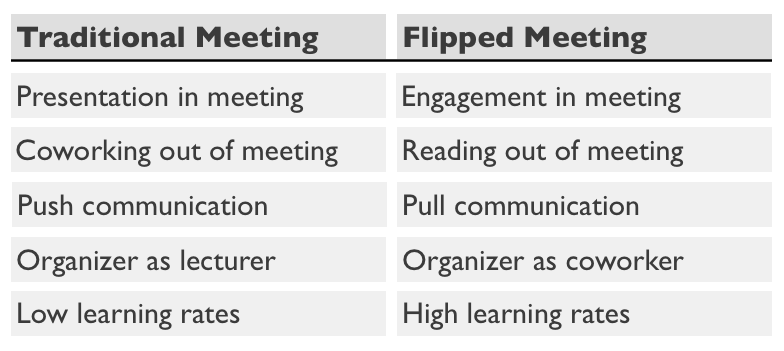Cool article here on “extroverted leadership.” You say “extroverted leadership” to a random rank-and-file at a company, and they probably will instantly quote you their fucking Meyers-Briggs four-letter combo. (Pavlovian.) In reality, though, introverts and extroverts and the interplay of the two is a huge work issue. Almost every team and every meeting has a mix of both; if you want your teams and meetings to succeed instead of becoming a giant clusterfuck where you want to take a rifle to your dick, you need to have some kind of idea about how to mix the two effectively. Problem is, very few people have any idea about this — and probably even less even think about this kind of stuff day-to-day. (“That shit is for thought leaders. We’re up here in the real world killing it!”) But maybe there’s a simple idea orgs could do. Let’s try it out.
First off, here’s what the study that a bunch of people — from Harvard, UPenn and UNC — did ended up finding. (One of the authors wrote this book, about how decisions get derailed, which seems like a topic every business should be reading about.) Here we go:
We found that extroverted leadership was linked to significantly higher store profits when employees were passive but significantly lower store profits when employees were proactive. In stores with passive employees, those led by extroverts achieved 16% higher profits than those led by introverts. However, in stores with proactive employees, those led by extroverts achieved 14% lower profits. As expected, extroverted leadership was an advantage with passive groups, but a disadvantage with proactive groups.
These results suggest that introverts can use their strengths to bring out the best in others. Yet introverts’ strengths are often locked up because of the way work is structured. Take meetings. In a culture where the typical meeting resembles a competition for loudest and most talkative, where the workspace is open and desks are practically touching, and where high levels of confidence, charisma, and sociability are the gold standard, introverts often feel they have to adjust who they are to “pass.” But they do so at a price, one that has ramifications for the company as well.
You probably know what “passive” and “proactive” mean, but essentially it means whether your team forges ahead and does stuff (proactive) or ends up mostly taking orders (passive).
So most managers, logically, are probably extroverts — we respond to extroversion and want to promote it, in some ways (plus there’s this) — but in reality, that doesn’t mean a lot if the employees are already proactive. (Admittedly, most employees aren’t proactive, so there’s that.) Introverts can be more effective managers, honestly — just like they should be better at networking — but the system is set up against them.
The article goes on to talk about this Amazon meetings idea — no, no, I’m not about to discuss the fucking “two-pizza rule” — where every meeting begins with silence. The owner (“leader”) of the meeting presents a memo about the meeting. Everyone reads it in silence. It’s supposed to address key themes and issues. Then, when you’re done reading it, you put it down. When everyone is read, the meeting begins. Also, Amazon banned PowerPoints — which is probably a good thing.
People love to quote Jeff Bezos in their presentations — he’s probably closer to “the next Steve Jobs” than anyone — so this memo-before-meeting idea has received a lot of coverage, including here and here.
I think this is a good idea for a lot of reasons. Notably, it does get to the “introvert problem.” Most meetings I’ve ever been in feel like everyone is jockeying to get their bullet point on there; the loudest voice can often win out. If you set it up where everyone is reading from the same document — essentially, consuming content together — before any discussion happens, that’s pretty powerful. Sitting around reading is something you do with your wife or your family. You know? That’s emotionally powerful.
Plus, let’s be honest: most meetings called have (a) no fucking agenda and (b) if they do, no one even looks at it. (Probably because they’re in other meetings.) So why not start everyone from Point A and see how they walk through the concepts together?
The biggest problem I see here is simply the idea of change, you know? People are used to how meetings are structured at their company. When you try to radically shift something, and say “OK, now we’re going to open by reading a memo,” a lot of people will have absolutely no idea what to do. It could take a while to catch on, or be scrapped. (Remember: habits are powerful; even the bad ones.)
What do you think? Could this open-with-a-memo idea work in your meetings? (Hopefully something new can work, because meetings are typically a fucking train headed for a gasoline factory.)
